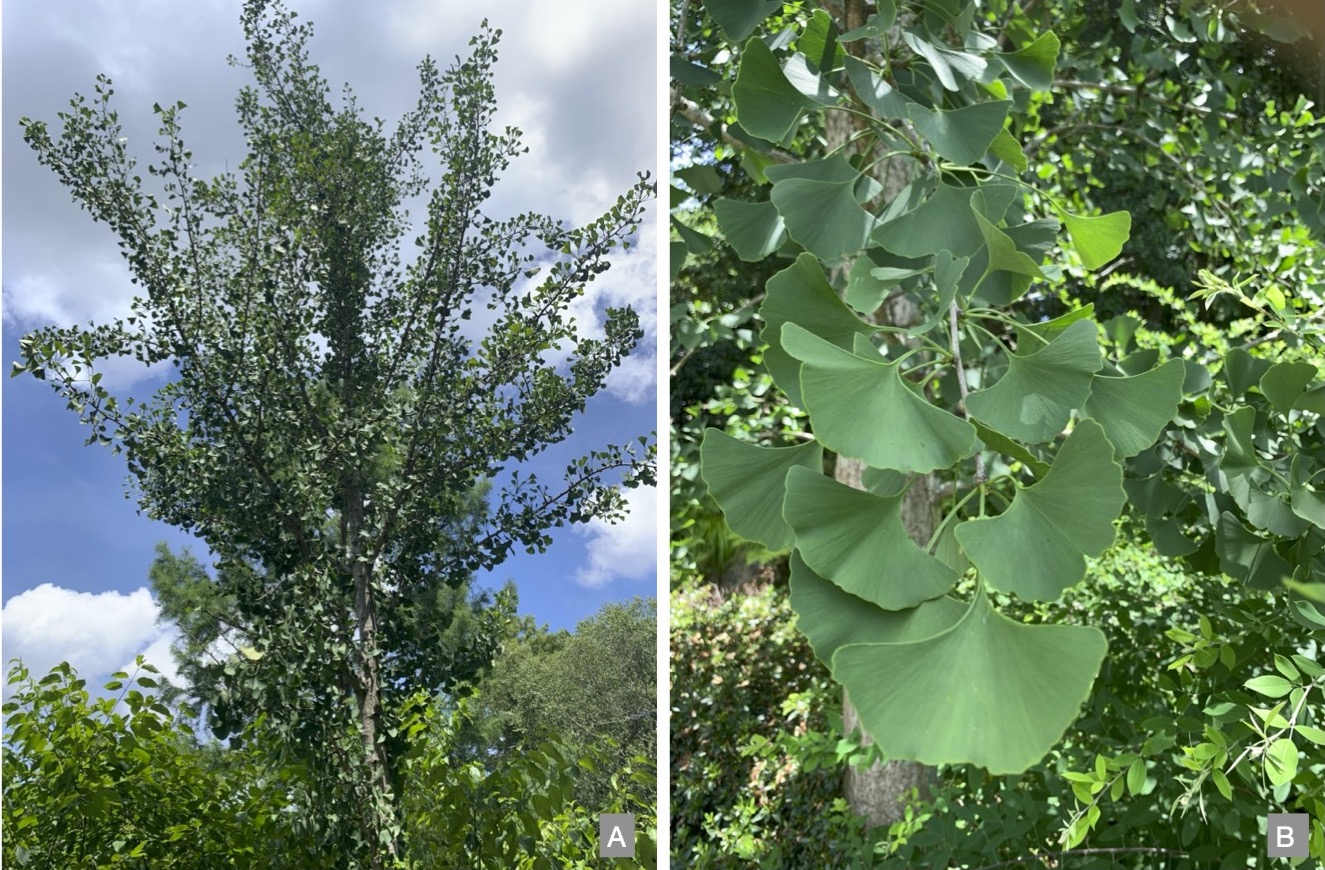8.4: Ginkgo
- Page ID
- 53588
Ginkgo (Phylum Ginkgophyta)
Solo hay una especie viva de ginkgo, el Ginkgo billoba, que es originaria de China, pero se cultiva en todo el mundo en regiones templadas. El registro fósil muestra que este grupo alguna vez fue diverso y tuvo una distribución generalizada en el hemisferio norte durante el Jurásico medio (hace 170 millones de años). Los fósiles de estas plantas jurásicas se parecen mucho al gingko moderno, lo que indica que sus características han cambiado poco con el tiempo, otorgando el estatus de “fósil vivo” a la única especie sobreviviente.
Gingko es fácil de reconocer por sus hojas en forma de abanico (Figura\(\PageIndex{1}\)). También se le conoce como el árbol de culantrillo, ya que las hojas se asemejan a las hojas de helecho culantrillo. El gingko puede ser masculino o femenino. Se cultivan ampliamente en zonas urbanas debido a sus hermosas hojas, que cambian de color en el otoño. Sin embargo, las plantas femeninas producen una estructura “parecida a un fruto” que en realidad es una semilla rodeada por una capa de semilla carnosa (no producen conos; Figura\(\PageIndex{2}\)). Las semillas emiten un mal olor, por lo que los árboles machos son preferidos para el cultivo en la mayoría de las áreas urbanas. En Asia, sin embargo, las semillas de ginkgo se consumen hervidas o tostadas, por lo que los árboles femeninos se cultivan predominantemente. El ginkgo también se usa como medicina, como un suplemento dietético que se usa para mejorar la circulación sanguínea.




